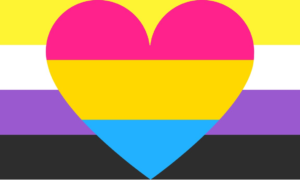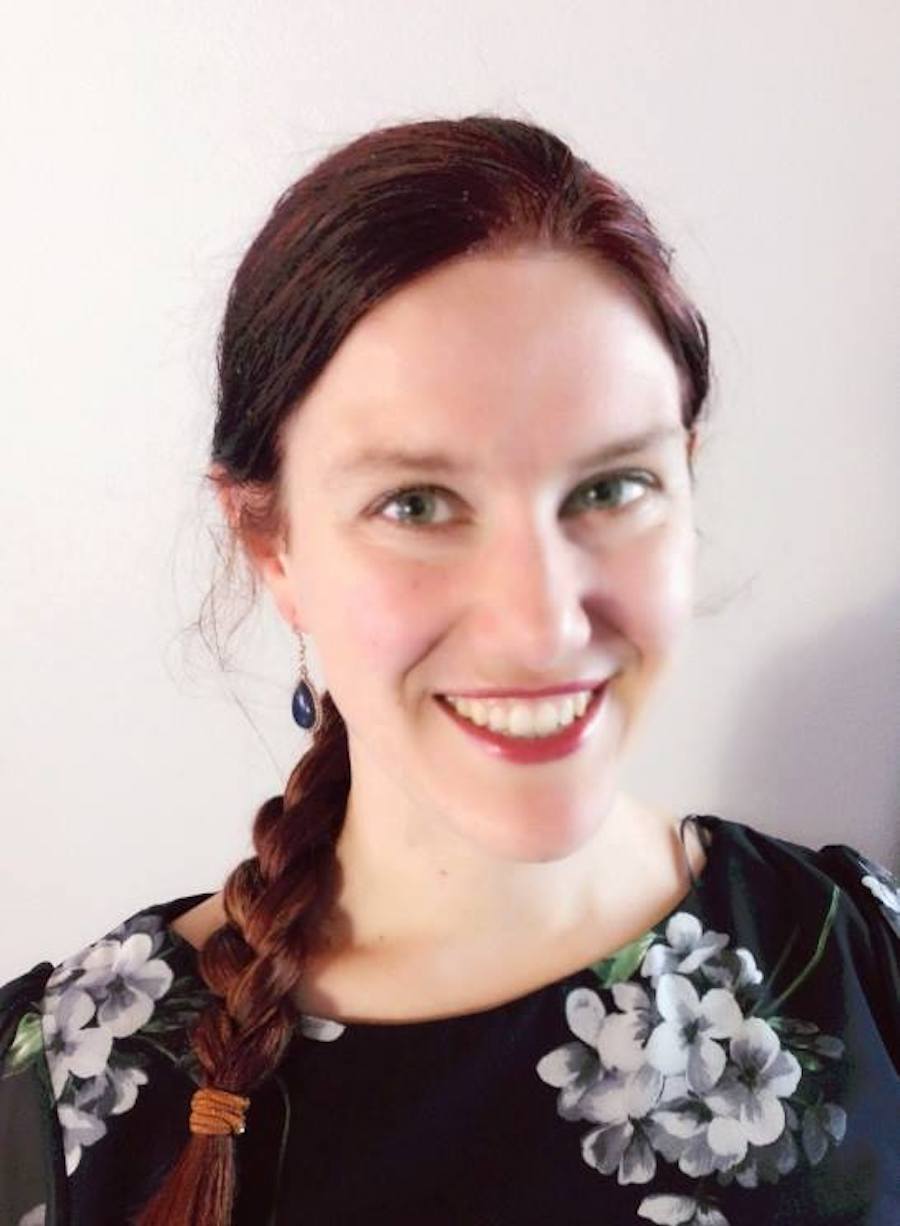By Martine Mussies
One of my best friends is a true activist. He stands on the barricades for equality, for better wages for workers, for a basic income, to solve the climate crisis and more. I admire that enormously. Because of my autism, I am scared to death of large crowds of people. The only moments that I dare to face them is when I can perform—be it for hundreds or even thousands of people in a church, concert hall or stadium—because then they are there and I am here, on stage: sheltered, secluded, and safe. Sometimes I blame myself for being too cowardly to stick my neck out. But then I realize that I have a softer, quieter form of resistance: my writing.
As I believe that words shape the world we live in, I write to change that world in baby steps. About the importance of the coral reef system, on how the Korean concept of Nunchi can empower “Westerners,” about ways to see the religious treasures in my church through a feminist lens, and about what “polygamish” folks can learn from all the mistakes in Netflix’ series “You – Me – Her” (just to name some examples). But most of my writing can be labelled as “auti-ethnographic”—writing on the autistic self, by the autistic self. By sharing my lived experiences, like in this essay for BWQ, I try to empower other “misfits” and improve their lives in various ways. I think that writing is important for, to paraphrase Gloria Wekker (in her portrait of Misi Juliette Cummings), while my narrative is a uniquely individual story, it is as much a collective story, a story of bisexual, non-binary Aspergers of my generation, ethnicity, and class background. And as I am convinced that oppressions are interlinked and cannot be solved in isolation, I also try to open up in writing in an intersectional way. But sometimes I am afraid to make myself so vulnerable. My writing as a verb is a means to connect with the safe space in myself, but my writing as a noun needs a safe place as well. To be read aloud and heard or to be published and read. A place intended to be free of bias, conflict, criticism, or potentially threatening actions, ideas, or conversations. We as oppressed groups—like women and minorities— need safe spaces for individuals who feel marginalized to come together to communicate and where violence, harassment, and hate speech are not tolerated.
The most well-known example of such a safe place is the idea of “women’s space”, which refers to the creation of places by women and for women. Women’s spaces, though under attack in the present day, are not recent phenomena but have existed for a long time. Women’s clubs, women’s gyms and women’s co-working spaces among others are just but a few examples of women’s spaces that fulfill the idea of women having a place of their own (Paley, 2019). Primarily, women’s spaces have been used to nurture, grow, and empower women and to encourage autonomy outside male influence (McFadden, n.d.). As long as women are oppressed, for example, by cat-calling and wolf-whistling in the streets, we need these spaces just as much as we need gender neutral bathrooms, respect for people’s preferred pronouns, and trigger warnings. We should realize, however, that these spaces are not centered on the exclusion of men and should not be defined by such. In truth, women’s spaces are spaces where certain hobbies, passions, and beliefs are given attention and significance equal to those in the male mainstream (Spain, 2016). These spaces give freedom to women regardless of who they are and where they come from. But as Moira Kenney explains, safe spaces “are more than freedom from crime and harassment. […] As developed in the context of the women’s movement, the notion of safe space implies a certain license to speak and act freely, form collective strength, and generate strategies for resistance” (from: Mapping Gay L.A. p. 24). Additionally, women’s spaces create a sense of sisterhood while at the same time creating environments that foster deep friendships, empowerment, and support for each other. As such, a safe space doesn’t have to be a physical location.
Virginia Woolf famously stated that “women need money and a room of their own in order to write fiction” (Woolf, 1929). This statement presents a unique definition of women’s space in writing and publication. Woolf reiterates that financial independence and intellectual freedom should ideally be the primary constituents of women’s space in publication— even though she acknowledges that such is not the case (Hawlin, 2017). In a complex and rapidly- evolving world, it is becoming an arduous task to define women’s spaces accurately. This is because there are various genders which are struggling to gain recognition and acceptance while at the same time battling the bludgeoning flames of discrimination. In a non-binary world, it is imperative to take note of and include non-binary persons and trans persons when defining women’s spaces (Merryfield, 2019). Using labels such as “Women-only” or “Just Girls” excludes many people, such as non-binary or trans people who feel feminine. It is important to have explicit descriptions of the target groups that these spaces want, as labels are important to all genders, the queer community in particular. Therefore, paying attention to the description of spaces allows room for the creation of inclusive, affirming, and welcoming women’s spaces, such as Bi Women Quarterly. Other examples of safe spaces where I feel at home are Women in Language and the Dutch movement AutiRoze (auti+pink), a meeting group for those that belong to two minorities: LGBTI+ people with autism. Members do not have to explain to each other what it feels like to be “doubly different.” They are not in the minority during an Auto-Pink evening and don’t have to explain to anyone that they are autistic, transgender, and/or gay. Often, little needs to be said to feel a sense of belonging. To belong together to a minority, even though there are many variations within that minority, still gives a kind of common ground. This ground offers the opportunity to make connections, something autistic people often find difficult.
Some critics suggest that safe spaces are a direct threat to free speech, foster groupthink, and limit the flow of ideas. But in my personal experience, quite the opposite happens: whereas in the outside world, I am often cocooned in my privilege of being white and able-bodied, wearing my mask of pretending to be normal (aka neurotypical, cis and heterosexual), in a safe space, I can strip myself to the core, break out of all (unwritten) rules and expectations and share my innermost thoughts. When openly speaking my mind as a kid and a youngster, countless times I was told to shut up: “Don’t be difficult,” “Could you please be normal for once?” and “Just adjust, how hard can it be?” But finally, in the safe space of BWQ, my voice is valued. For in BWQ, my Otherness as an autistic bi woman is regarded as part of a larger whole, where all our “different” voices become a beautiful choir.

Combined pansexual & non-binary pride flag
References
Hawlin, T. (2017). The Rise of Women-Only Literary Spaces,UK Edition. Literary Hub. Retrieved from: https://lithub.com/the-rise-of-women-only-literary-spaces-uk-edition/
Woolf, V. (1929). A Room of One’s Own. New York: Harcourt, Brace and Company.
McFadden, P. (n. d.). Why Women’s Spaces are Critical to Feminist Autonomy. Isis International. Retrieved from: http://www.isiswomen.org/index.php?option=com_content&view=article&id=630:why-womens-spaces-are-critical-to-feminist-autonomy&catid=127:theme-mens-involvement-in-womens-empowerment
Merryfield, L. (2019). Lifting Up Women’s Voices While Challenging the Binary. Kennedy School Review. Retrieved from: https://ksr.hkspublications.org/2019/04/11/womens-spaces-transgender-voices/
Paley, R.T. (2019). Why Women’s Spaces Are — and HaveAlways Been — Important. Eventbrite. Retrieved from: https://www.eventbrite.com/rally/united-states/womens-spaces/
Spain, D. (2016). Constructive Feminism: Women’s Spaces and Women’s Rights in the American City. Cornell University Press.
Martine Mussies is a Ph.D. candidate at Utrecht University, the Netherlands, writing about the Cyborg Mermaid. Besides her research, Martine is a professional musician. Her other interests include autism, psychology, karate, kendo, King Alfred, and science fiction.

